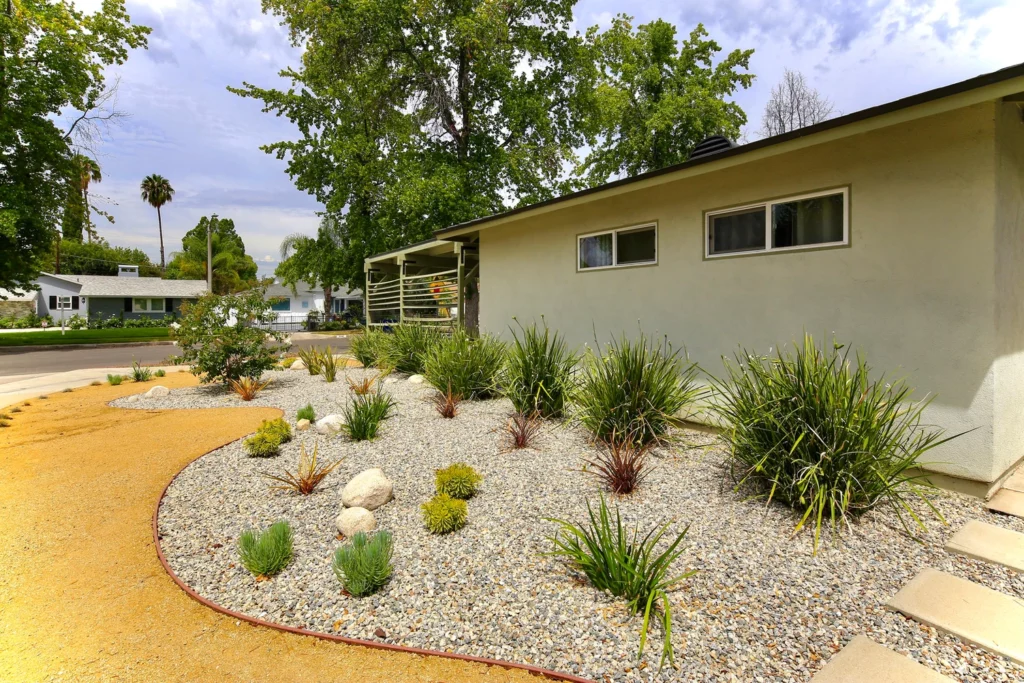If you live in California or other dry places, having a drought-tolerant lawn may not just be a mindful choice, but also a mandatory one. Across California, drought-tolerant plants are expected to dominate the majority of lawns. This is necessary in order to save water in California’s hot and dry weather conditions. Here are some tips and tricks to help you successfully create a beautiful drought-tolerant landscape along with pictures of past drought-tolerant landscapes we’ve created.

1. Combining hardscape materials with drought-tolerant plants is a good way to add variety to your space while still saving water. For example, you could put boulders in between plants, or pavement in areas where you may normally have grass. Larger hardscape objects such as a water fountain/feature can also be a good idea. Even though this may seem counterintuitive, with the right design a water feature/fountain can recycle and reuse the same water. This can add a sense of “freshness” in an otherwise “dry” garden while also making it more aesthetically pleasing.
2. Native plants are a great way to go when making plant selections for your landscape. California’s native plants are accustomed to California’s weather, and can actually thrive in it. This means they require less water, less maintenance, and even less pesticides. Not only can native plants save you water, but it is also known that the native wildlife prefers native plants and vise versa. Native plants benefit the environment by providing habitat for birds and other native pollinators, which in return can improve the fruit set in your garden and help keep your area mosquito free. Outside of native plants, succulents and cacti are also always a good idea for drought-tolerant gardens.


3. Decomposed granite is an effective drought-tolerant material to use when landscaping. It is created from the natural weathering and erosion of solid granite, and is known to be great mulch material. This is an inexpensive and natural way to fill ground space in your backyard. Decomposed granite needs little to no maintenance, and also helps keep dust down in your yard. It comes in a variety of colors but is usually seen in earthy tones that look natural.
4. Pea Gravel is another inexpensive and natural drought-tolerant material. Pea gravel is pea sized stones that are a result of natural weathering found near bodies of water. They are good for covering driveways, paths, and creating transitions in your backyard. Not only can pea gravel save tons of water, it also suppresses weed growth, retains moisture, and doesn’t decompose like organic mulch. When done right, pea gravel can make your backyard more aesthetically pleasing, while keeping it free of mud and weeds.



5. Grouping plants together, especially the ones that may require more watering, is a great way to have a few of your favorite beautiful but thirsty plants in your yard without wasting much water. Preferably putting the ones that require the most water at a closer reach. This way you can water just that section of your garden a little more than everything else, allowing you to still have some of the plants you may want while also being mindful of your water use.

Remember that even though a drought-tolerant garden only needs minimal water to grow and thrive, it cannot go with zero water for too long. Even with a drought tolerant garden it is important to make sure that you are still regularly caring for and watering your plants in a mindful manner.
If you need help designing, creating, or maintaining your landscape give us a call at 818-751-2690 or click here.
